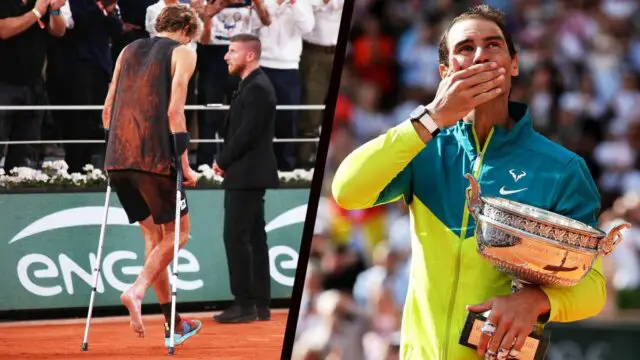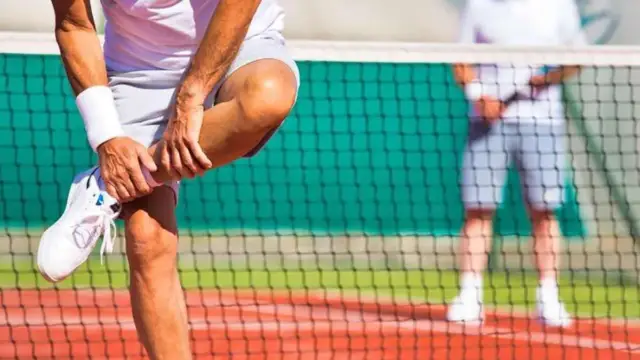The Spanish tennis player managed to prevail at Roland Garrós, despite a chronic pain problem in his left foot. What is this problem about and how has he been able to play despite it? This was one of Rafael Nadal’s powerful statements after being crowned Roland Garros champion on Sunday, a tournament in which he managed to triumph despite having played with a completely numb foot.
The 36-year-old Spanish tennis player received multiple injections during the competition, in which he won his 22nd Grand Slam title. However, he said he does not want to continue playing if he continues to need anesthesia to nullify the pain he feels from a chronic problem with his left foot. But what problem exactly does Nadal have with his foot, and how can he solve it?
The Mueller-Weiss Syndrome
The 14-time Roland Garrós champion suffers from what is known as Mueller-Weiss Syndrome. This is a rare degenerative condition that affects one of the bones in his foot, and which explains why he was seen limping at the Rome Masters (formerly known as the Italian Open) 10 days before Roland Garrós began.

The syndrome affects the navicular bone (also called tarsal scaphoid of the foot), a small bone that is part of the tarsus and has 6 faces. This bone receives various pressures, and for unknown reasons, it loses vascularization -that is, blood flow- and this produces episodes of necrosis that weaken the bone.
In the most severe cases, especially in “people who put a lot of pressure on the foot, the bone will disintegrate; it will flatten. That is, it can fragment and transform into osteoratritis”, Didier Mainard, president of the French association for the foot surgery, and director of orthopedic surgery at Hopital Nancy, in France.
In short, the problem wears down the bone and causes intense pain in the back of the foot. The syndrome can affect one or both feet, and is usually suffered by more women than men, between the ages of 40 and 60.
A longstanding injury
Nadal started showing the first symptoms in 2005, during the Madrid Masters tournament, and later, after a series of tests, he was diagnosed with the syndrome, which he has been dealing with ever since. “I’ve been playing with nerve injections to numb my foot and that’s why I’ve been able to play for these 2 weeks”, Nadal explained after beating Norwegian Casper Ruud 6-3, 6-3, 6-0 on Sunday.
“I have no feeling in my foot, because my doctor was able to put anesthetic injections into the nerves. That eliminates the feeling in the foot.” And he added: “I will be at Wimbledon if my body is ready to be at Wimbledon. That is all. Wimbledon is not a tournament I want to miss. I think nobody wants to miss Wimbledon; I love Wimbledon. If I am able to play with anti-inflammatories, yes; playing with anesthetic injections, no. I do not want to put myself in that position again”.
Treatment

Every treatment depends a lot on each patient and the degree of progress of the condition. In milder cases, rest as well as the use of orthopedic insoles can help reduce pain. Treatments with anti-inflammatories or infiltrations are also used, and when the state is very advanced and the bone has disintegrated, surgery is required.
Nadal noted that he will soon receive radiofrequency ablation -which uses heat on the nerve to relieve pain- but that he may have to consider surgery if the treatment is not enough. “If that works, I am going to move on. But if it does not work, then it is another story”, he said on Sunday.
As the tennis player pointed out, he now has to consider if he is ready to have an important surgery that does not guarantee that he will be able to compete again.

For those who have experienced shifts in consciousness and know that more peace, joy, and love awaits in a better living environment. A bold shared vision. A living community and hub for innovation. A sustainable ecosystem for living and working. A model for the new future.
